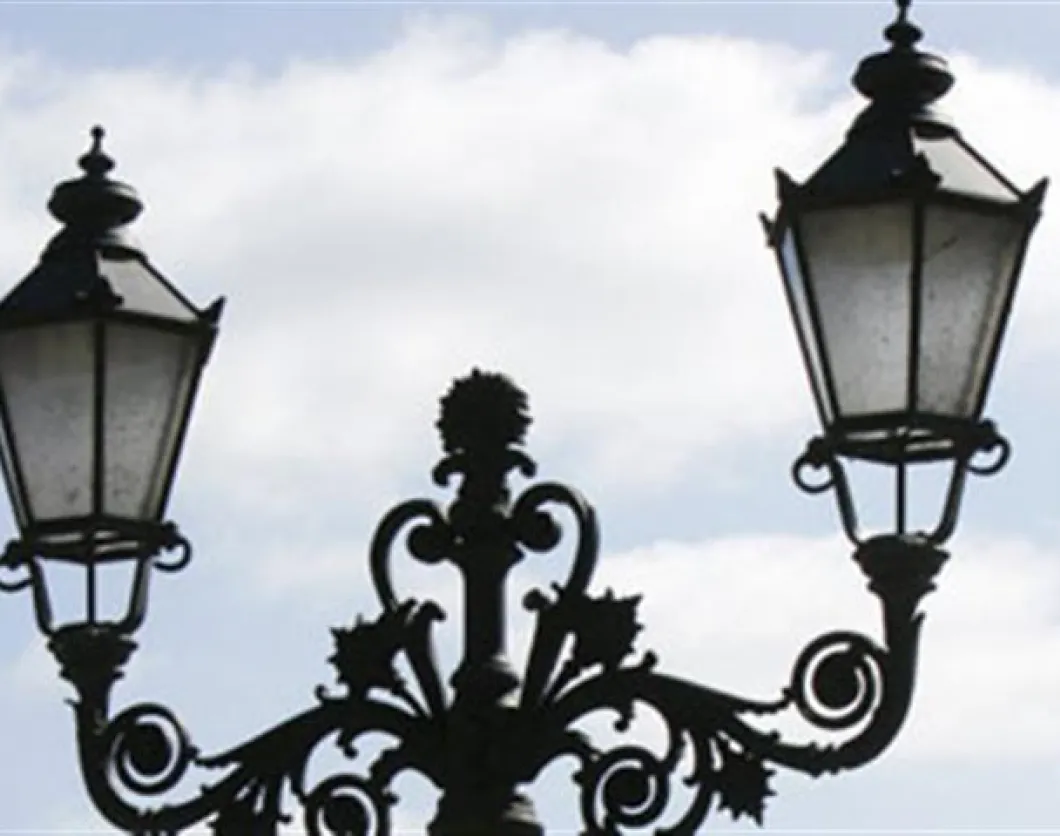The warm glow of Berlin's historic gas streetlights could be burning out soon. Although the romantic gas street lights are functioning without a flaw and have been a part of Berlin's landscape for over 200 years, City Hall has announced that it intends to phase out the majority of the gas lamps in an effort to make the city carbon-neutral by the year 2050.
Currently, Berlin contains over 42,500 gas powered streetlights, and some streetlight models cost as much as $700.00 a year for fuel and maintenance. Additionally, the gas street lamps emit ten times the amount of carbon dioxide as an equivalent electric lamp. This combination has created strong financial and environmental incentives that are compelling the city to switch the gas streetlights to other electric alternatives.
A spokesperson from the Department of Urban Development in Berlin, Petra Rohland, stated that the current plan will phase out the lights by 2016, and that all but a few of the gas powered streetlamps will eventually go. Due to the city's proposed conversion plan, 1,500 gas powered streetlamps have been previously removed since 2012.
The local community opposes the proposed replacement plan, as well as countless tourists that are attracted to the distinctive warm glow of the street lamps as they tour the picturesque neighborhoods. As people walk through the neighborhoods of Berlin at nighttime, the gas lamps have a way of pulling them back in time.
The gas streetlights have incredible historical value as well, having followed industrial design developments from the 19th century to post WW II. The original four street lamp designs included traditional, suspended, top piece, and in line models. In 1826, Berlin contained only 26 streetlamps, and about 110 years later in 1939, the number had grown to over 88,000. Today, about 42,500 gas streetlights remain standing.
The gas powered streetlights have grown alongside the city through the industrial era and beyond; they now stand as an integral representation of the city's identity, character, and urban landscape. The city's gas street lighting structure has been modified throughout the years and remains in good working condition, and the proposed plan to replace the remaining gas powered streetlamps is strongly opposed by local residents and tourists alike. There is currently a growing number of preservation societies who oppose the plan.
Organizations such as Förderkreis Alte Kirchen are becoming more actively involved in the NGO campaign in support of Berlin's gas street lights. This organization recently made the recommendations to Europa Nostra for The 7 Most Endangered Monuments and Sites of Europe, and their aim is to protect and preserve historical sites. The historical sites were chosen from civil society organizations from 21 European countries.
Förderkreis Alte Kirchen recognizes the city's gas powered streetlight conversion plan as a threat to items of the city's industrial heritage. The organization is now calling for support up to the international level in order to delay or put an end to the streetlamp replacement plan. The association believes that by utilizing the gas powered street lamps as a tourist attraction, they will draw more visitors and bring the necessary revenue to the city.











